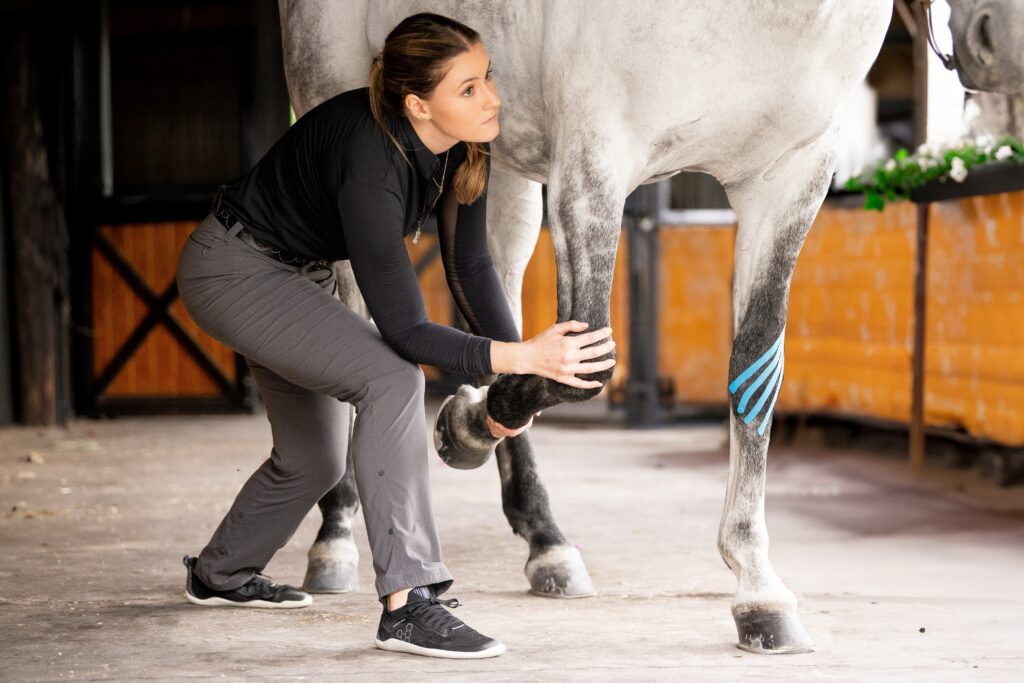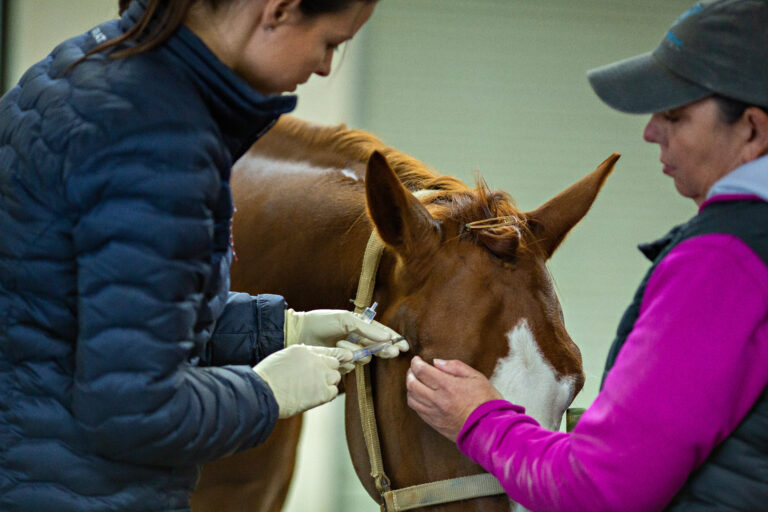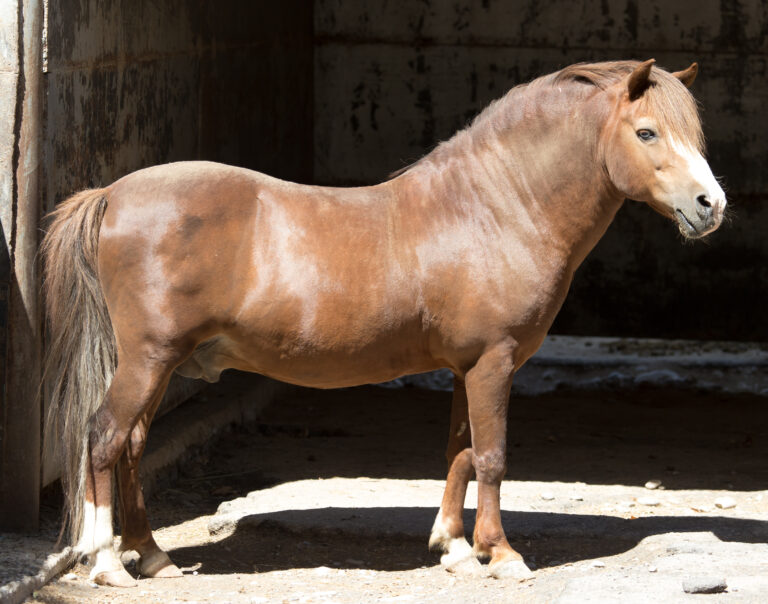
Throughout many parts of the world, the physiotherapist is a must-have player on a horse’s rehabilitation team—but not in the U.S. In most states, veterinary laws restrict the terms “physiotherapy” and “physiotherapist” to veterinarians and human physical therapists. Realistically, however, with the exception of those who’ve chosen to specialize in equine sports medicine or rehabilitation, many general practice veterinarians don’t have the bandwidth to effectively carry out a horse’s entire rehab process. Here’s how the current legislation might be doing a disservice to the industry as a whole and how turning to dedicated paraprofessionals to execute rehabilitation plans could be a more efficient use of veterinarians’ time and skill sets.
Most Ambulatory Veterinarians Aren’t Set Up to Carry Out Rehab Plans Alone
Without access to a dedicated professional whose specialty lies in sports injury and recovery, the expectation to rehabilitate an injured horse tends to fall on that animal’s primary veterinarian. “Considering the current veterinary shortage and the difficulty in accessing equine medical care in certain parts of the U.S., we hope that one day, vets will have the option to refer their equine patients to specialized, licensed physiotherapists for rehabilitation,” says Emma Milford, an equine pulsed electromagnetic field (PEMF) and kinesiology taping practitioner pursuing a Doctorate of Physical Therapy (DPT).
“Having a DVM or a DPT as a prerequisite for veterinary physiotherapy severely limits the applicant pool,” adds Kailyn Pupa, a New Jersey native who traveled to the U.K. pursue a postgraduate diploma in veterinary physiotherapy due to the lack of comparable alternatives stateside. Pupa attended ARU Writtle University College in England before opening her bodywork practice, Bullseye Equine, in Wellington, Florida.
“Veterinary medicine, human physical therapy, and animal physical therapy are closely linked but require distinct bases of skill and knowledge,” says Pupa. “In my opinion, they should have separate careers and schooling paths. Counting on your veterinarian to carry out your horse’s rehabilitation is like expecting your primary physician to also serve as your physical therapist.”
Veterinary Physiotherapy: A Recognized Profession Worldwide
In Europe, the United Kingdom, Australia, and other developed countries, licensed animal veterinary physiotherapists (aka “physios”) are recognized paraprofessionals. Trained in anatomy, physiology, biomechanics, sports injury, and rehabilitation, these specialists are not doctors themselves but collaborate with veterinarians to design and implement rehabilitation programs for animals recovering from injury or surgery.
“When a vet gives consent for the treatment of a horse by a qualified veterinary physiotherapist (VP), vets are giving their patients the chance to have a better recovery from surgeries and injury,” says Roberta Blake, BSc, VetMed, PhD, a veterinary surgeon and specialist in large animal surgery, sports medicine, and biomechanics and associate professor for Veterinary Physiotherapy and Equine Sports Therapy and Rehabilitation courses at ARU Writtle University College. “Not only that, the VP also works in a multidisciplinary team to improve performance and prevent injuries in both sport and leisure horses. At ARU Writtle, we provide Veterinary Physiotherapy qualifications, ensuring a high level of training and professionalism. In humans, there is the doctor and the physiotherapist, each one with their role in human health; the veterinary world should be no different.”
Communication between the two professionals is key, and a physiotherapist usually discusses treatment plans and shares their reports with the referring DVM. After diagnosis and primary treatment of an injury—take, for example, intralesional platelet-rich plasma injection of a suspensory ligament—the veterinarian might choose to refer the patient to a credentialed physiotherapist for rehabilitation. The equine physiotherapist’s role can include:
Assessment Without diagnosing—an act that remains exclusive to veterinarians—physios can perform detailed physical examinations to assess the horse’s musculoskeletal and neurologic condition. This includes evaluating gait, posture, range of motion, and muscle tone and symmetry.
Therapeutic interventions Physiotherapists can be trained and certified to safely and effectively administer various therapeutic modalities, including laser therapy, therapeutic ultrasound, hydrotherapy, kinesiology tape, functional electrical stimulation (FES), shock wave therapy, and PEMF therapy. Currently, these therapies are either unregulated or restricted to use by licensed veterinarians in certain U.S. states. Allowing a credentialed, insured physio to apply these modalities via veterinarian referral could be a reasonable and logical compromise to the current legislation.
Manual therapies Massage therapy, myofascial release, and stretching are a few of the manual therapies that can be integrated into a horse’s rehab program to improve mobility and function. Physios are well-suited for this role, as they have extensive knowledge of equine anatomy and physiology.
Rehabilitation programs This is the bread and butter of the equine physio’s role: developing and overseeing customized rehabilitation protocols tailored to each horse’s individual needs. These programs often involve groundwork exercises to improve strength, flexibility, and coordination. Physios can assign such exercises to horse owners, come perform them several times a week, or carry out a combination of both.
Owner education and support Physios can provide clients with one-on-one attention and follow-ups at more frequent intervals than most ambulatory veterinarians’ schedules allow.
An Equine Version of the Human Physical Therapist
In the U.S., human medicine follows a similar dynamic as veterinary medicine abroad. Your primary doctor might refer you to a specialist for a particular procedure, then discharge you to a physical therapist who is well-qualified to handle the aftercare and rehabilitation of your injury. But to date, this hierarchy hasn’t transferred to the barn.
“For a sport with such highly valued performance animals prone to repetitive stress and overuse injuries, one would expect to see a vested interest in producing licensed professionals who can provide physical therapy to our equine partners,” says Milford, who hopes to specialize in physical therapy for both horses and equestrians. Because of the current legislation regarding physiotherapy, however, in lieu of credentialed physiotherapists, bodyworkers with various qualifications are being recruited to help with a horse’s rehab. While these professionals can certainly bring value, their work complements rather than replaces a structured rehabilitation protocol, and their profession’s lack of regulation is problematic.
The Issue With Lumping Together Equine ‘Bodyworkers’ and ‘Physiotherapists’
“Animal bodywork in the U.S. is the Wild West. There are generally no education requirements or federal regulations at all,” Pupa said—something she realized when she decided to pursue a seven-year higher education path that would allow her to stand out in the crowd. “The education of equine massage therapists can range from years of hands-on supervised training, in-person examinations, completion of case studies, research, and years of accumulating knowledge to merely watching a few hours of online video content. At the end of the day, both scenarios grant the student the same title—certified equine massage therapist (CEMT).”
The CEMT title is currently a free-for-all in the U.S. With the exception of a few states that place equine massage under their Veterinary Practice Act, animal massage is largely unregulated.
In contrast, other countries grant veterinary physiotherapists a protected title, much like certified, licensed, or registered veterinary technicians in the U.S., with the acronyms—CVT, LVT, RVT—varying by state. This distinction between physiotherapists and bodyworkers or massage therapists allows horse owners and veterinarians alike to make educated decisions about the professionals with whom they entrust their horse’s recovery and rehabilitation.
Our sources agree that a lack of formal academic programs and regulations are obstacles to the recognition of veterinary physiotherapy as a legitimate profession in the U.S. But that hasn’t stopped determined professionals like Aurora Sochan, CVT, VTS-ENS, CERP, from forging their own educational paths stateside. The owner of New-Hampshire-based In Gait Equine, Sochan calls herself an equine rehabilitation practitioner. Her self-paced educational journey has included earning her veterinary technician certification (CVT) and becoming a Veterinary Technician Specialist in Equine Veterinary Nursing (VTS-EVN) and a Certified Equine Rehabilitation Practitioner (CERP)—the latter program being offered exclusively to veterinarians, veterinary technicians, and physical therapists by the University of Tennessee in Knoxville. Despite her extensive education and qualifications in rehabilitation, Sochan can’t, under current legislation, advertise herself as a veterinary physiotherapist in the U.S.
Take-Home Message
Some veterinarians choose to specialize in physiotherapy and rehabilitation, and these services can be consistent revenue sources for their practices. For others, however—particularly solo or short-staffed equine vets—rehabilitating the injured horses in their practice shouldn’t fall on their shoulders by default. Everyone from busy practitioners to horse owners could benefit from the integration of collaborative veterinary physiotherapists who have dedicated their careers to bringing equine patients back to their former athletic abilities.
Related Reading
- Developing Horses’ Core Fitness
- So You Want to Be an Equine Veterinary Technician?
- The Business of Practice: Equine Rehabilitation Veterinary Practices
Stay in the know! Sign up for EquiManagement’s FREE weekly newsletters to get the latest equine research, disease alerts, and vet practice updates delivered straight to your inbox.




